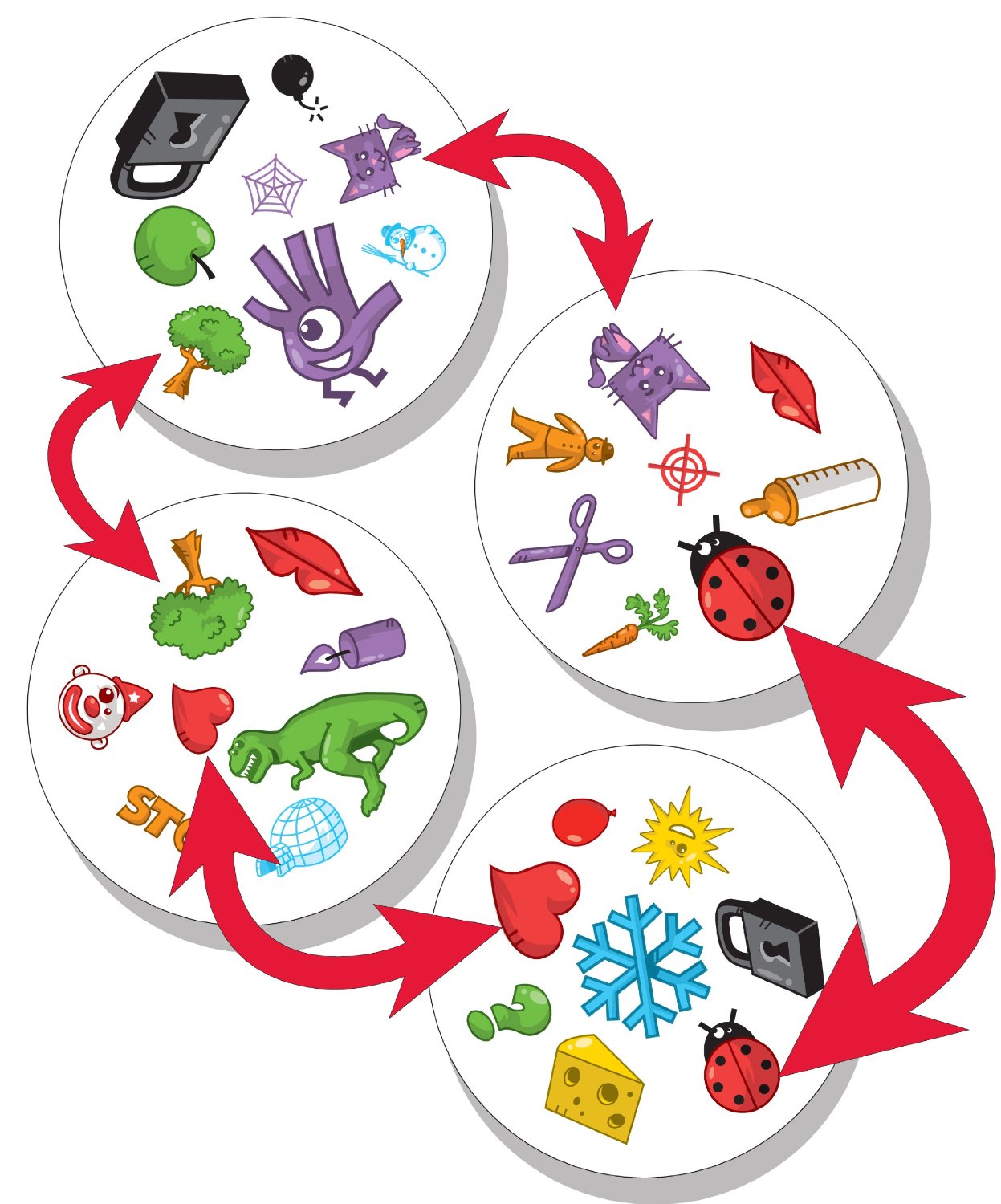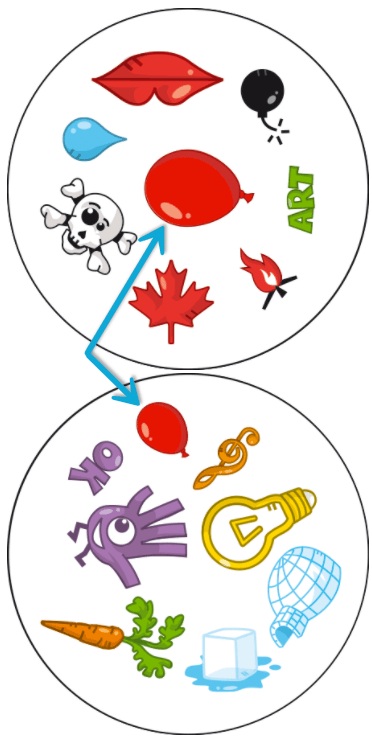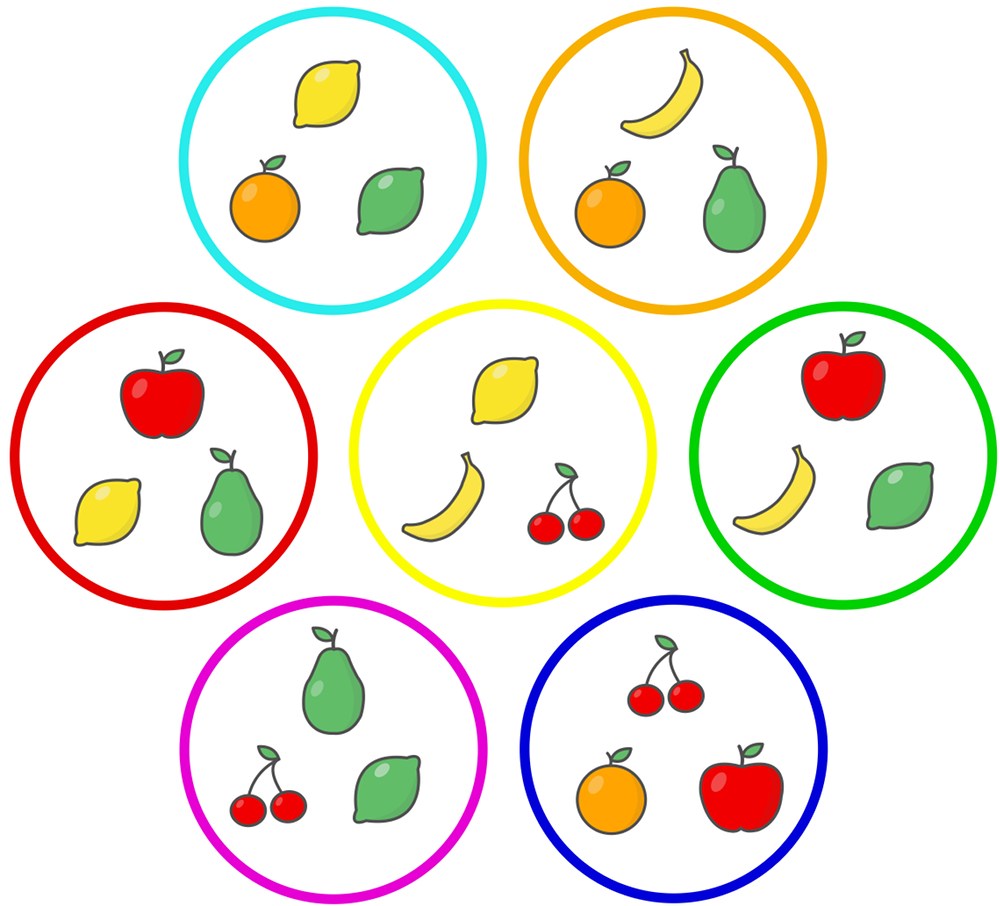Spot It!
Players: 2-8
Ages: 3 and up
Purchase: Buy on Amazon (affiliate link)
Math Ideas: Combinatorics
Questions to Ask:
Can you make your own set of Spot It cards?
If you have very young kids who can't recognize numerals or read instructions, then some of the games I recommend are just a little too advanced for your kids.
But this week's recommendation is absolutely playable by a three-year-old, while still remaining fun for older kids. I liken it to an even more accessible version of SET. Big groups can play, the instructions are incredibly simple, and there are a ton of fun variations that you can try.
The game is a simple little card game called Spot It!
How to Play
Spot It! comes in a small circular tin containing 55 cards. Each card has eight images printed on it.
The cool thing about Spot It! cards is that each pair of cards is guaranteed to have one shared image, and ONLY one shared image. Sounds crazy, right? How can there be a deck of cards where every card shares exactly one image with every single other card in the deck? Well, there's a pretty interesting mathematical explanation.
But for now, let's just take the game at its word: Each pair of cards has exactly one shared image.
So how do you play Spot It? Well, the game comes with several basic variations. I'll share one of my favorites:
Each person playing is dealt a pile of cards that they look at. A central card is placed between all the players. So if you are playing, you are looking at the top card in your pile of cards and trying to find the image that it shares with the central card.
Let's say your top card shares a balloon with the central card. You yell out "Balloon!" and placed your top card on top of the central card.
Now everyone is trying to find the images that matches the new central card. The goal of the game is to get rid of all your cards.
See how simple the game is? If your kids love memory and matching games, then they'll love this card-based variation.
Another variation that I invented works basically like SET. You place nine cards in a 3x3 grid in the center of the table. Then everyone looks for a set of three cards that all share the same image. If you spot a set, you keep those three cards. It's a bit more challenging than finding a single shared image, but still very accessible for young kids. My four-year-old was easily able to play this variation.
Where's the Math? / Questions to Ask
So how did the creators of Spot It! come up with a set of cards that perfectly works for the game? Well, it's a pretty complex math problem, in fact! If you're on the nerdy side, you can check out this helpful video from Science Mom.
If not, then I'll just say the game has to do with geometric structures like the one at left. But don't worry! You don't need to understand what a Fano plane is (I sure don't!) in order to have some mathematical fun with Spot It!
Once you've played the game a bunch of times, you can ask your child "Want to make your own set of Spot It! cards?"
Hopefully the answer is yes! If so, you can walk them through the following challenges:
Challenge One: 3 cards, 3 images, 2 images per card.
I recommend this as an introduction, since the actual construction of the cards should be fairly straightforward.
Have your child start by brainstorming three simple images that they'll draw on their cards. They could do a heart, a smiley face, and a star.
Then give them three cards (cardstock works well, and don't worry about creating circular cards unless you really want to!)
Tell your child "You need two images on each card. Remember, every card can only share one image with any other card!"
Once they've mastered the basic version, you can move on to the next challenge!
Challenge Two: 7 cards, 7 images, 3 images per card.
Again, I would get your child to start by brainstorming the seven images she wants to use: they need to be distinct in shape and color so they are easily identified.
Then give her seven cards and the same instructions. Each card needs three images, and each pair of cards can only share one image.
This is quite a challenge, but that's part of the point! your child will learn from her errors and, if given multiple chances to attempt the problem, will likely start to develop a more strategic approach over time.
In my opinion, it's better to leave the problem unsolved than to do the work for your child. You never know when she might pick up a pencil and paper and try to solve it on her own later...
If you want to try more difficult challenges, here they are!
13 cards, 13 images, 4 images per card.
21 cards, 21 images, 5 images per card.
31 cards, 31 images, 6 images per card
If you do end up making cards of your own, share them with me! Just shoot me an email at this address and I'll share your kids' amazing work with everyone.
Click here to buy Spot It! on Amazon (affiliate link)






